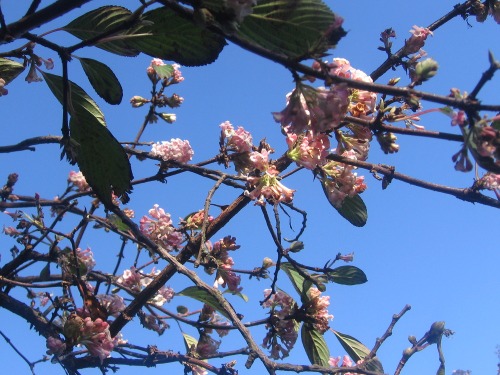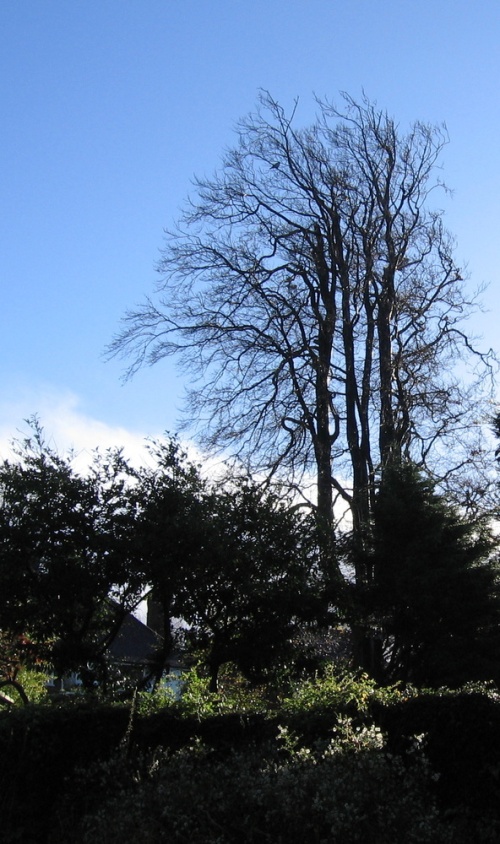Time to Wear Gloves 28 November 2012
Out we stagger to battle the wind and the rain bundled up in our raincoats and scarves, boots for wading through standing water or slip-sliding in the mud and mouldering leaves. The weather forecast confirms it – high winds and heavy rain, floods in many areas. Willow wears a warm fleecy coat and is the only enthusiast for these outings.
But in the formal gardens of one of the city’s parks – flagstone and brick paths between the geometric design of clipped yew hedges – there are winter delights. Suddenly and briefly, the skies have cleared. There’s a fragrance in the air from a long-established small tree, a variety named after the famous Bodnant gardens in North Wales, Viburnum Bodnantense ‘Dawn’ now in full flower, tiny pale pink clusters framed against a brilliant blue sky, colours so intense it seems like cherry blossom in Springtime. There’s something enchanting about shrubs that flower in winter; it’s somehow counter-intuitive; against all the odds.
Protected by a wall, a cascade of pale yellow stars of Winter Jasmine, and sprays of Cotoneaster berries like little red buttons. This autumn there’s been an abundance of berries usually warning of a hard winter to come. In a shaded corner are bushes of the tolerant ‘I will grow anywhere’ Snowberry, white puff balls on slender arching branches; in a sunny spot, dramatic bright red stems of Cornus. There’s so much to see. Under a silver birch tree, there are tiny pink cyclamen between heart-shaped leaves, beautifully marbled with silver.
Great clumps of bedraggled ornamental grasses are motionless, too drenched to move in the strong wind blowing off the sea. It’s a damp penetrating chill and my hands have got cold from clasping the dog’s lead. ‘Dogs Must Be Kept On A Lead’.
I’ll remember my gloves next time.



